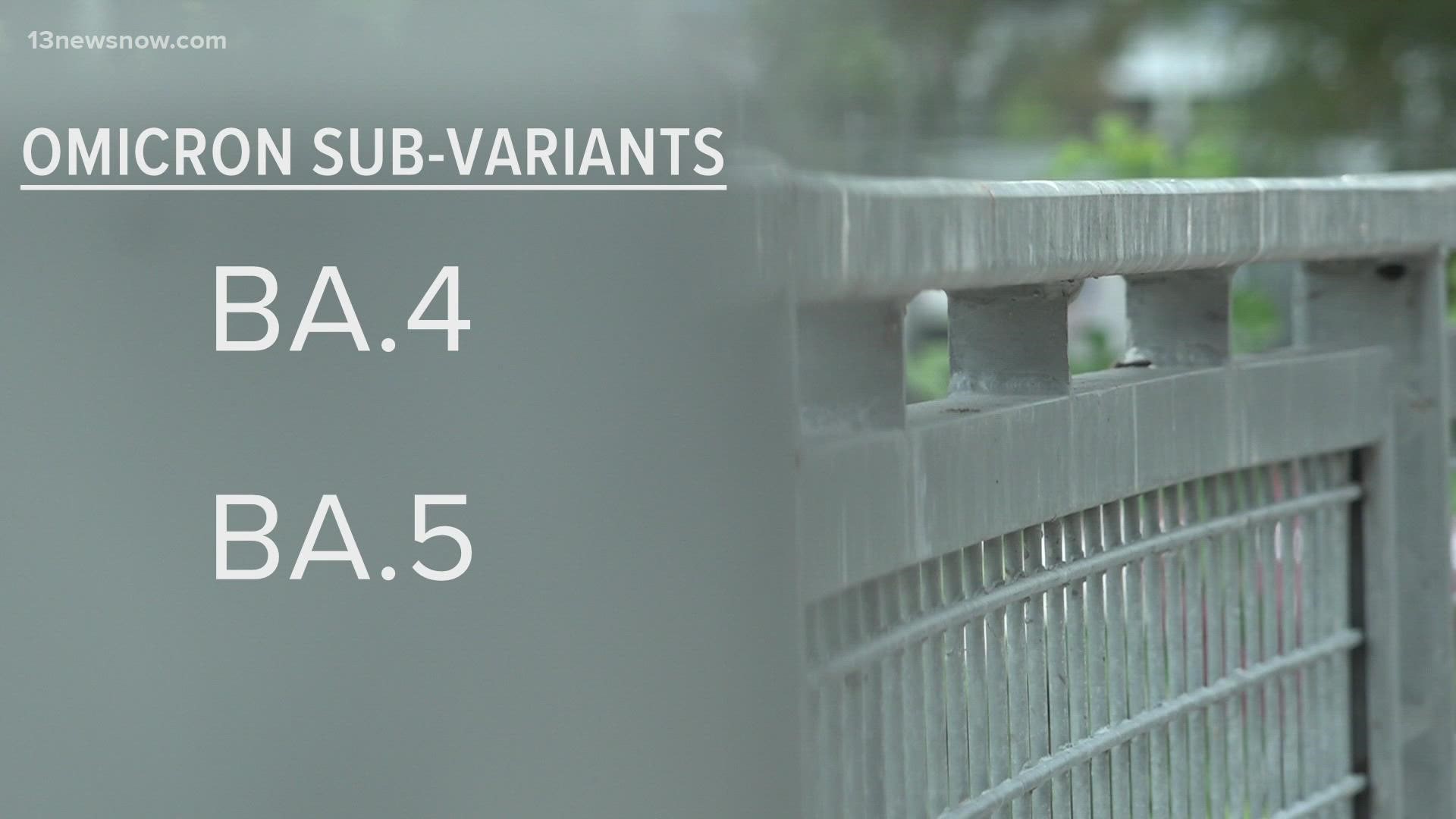VIRGINIA BEACH, Va. — It can be difficult to keep up with the different subvariants of COVID-19, especially when the World Health Organization sends out alerts about surges across the globe.
An environmental scientist, Kyle Curtis, with the Hampton Roads Sanitation District studies the variants and subvariants of COVID-19. He and his team track wastewater, which is where both symptomatic and asymptomatic people shed the virus.
It's a study method Curtis said researchers use for various viruses, including Influenza.
Curtis said his team has seen an uptick in the latest subvariants of omicron, which are labeled BA.4 and BA.5.
"BA.4 and BA.5 have been on the increase in proportion relative to the whole signal for the past month maybe," said Curtis. "With all the other variants, what we saw is once one moves in, we see that exponential growth, where for a while, it seems like small increments, but it's really doubling. So, it goes up rapidly."
This trend coincides with what scientists with WHO said they are seeing. Top health experts say the BA.4 and BA.5 subvariants have a higher transmission rate than the other subvariants, but the severity of this form of the virus is still unclear.
However, in Hampton Roads, Curtis said scientists are seeing a unique trend with these subvariants. He said the research over the past month shows the number of cases has formed a plateau on the data charts, but not at a low rate like Curtis and his team would have hoped.
"Our data has been noisily steady," said Curtis. "It is a little different than what we've seen previously, which is pretty defined upticks and then these crashes and not long until you go up the wave again."
Epidemiologist Collette Dougherty with Chesapeake Health Department said the subvariants' symptoms start out similarly to the common cold or even allergies.
"We're seeing it's spreading easier than previous variants," said Dougherty. "Mostly, we've noticed the difference is it is primarily the upper respiratory infection."
As people wait to get approved for the second COVID-19 booster, she said we all have to consider the rules we have followed since the beginning of the pandemic.
"If you have concerns about your own risk or others around you, consider wearing a mask in public or transitioning to outdoor events and taking those individual protective measures," said Dougherty.
Dougherty said we may see a new booster in the fall, but until then, taking extra precautions is the best way to stay safe.
"I don't want people to think we're back to square one, because we're not. We're in a vastly better position than we have in years past with previous waves," said Dougherty. "That's not to say ignore it. There are still measures we need to take on our own as individuals to do the best we can to stay healthy for ourselves and our community."
Dougherty said it's possible the Centers for Disease Control and Prevention and the Food and Drug Administration will approve a second COVID-19 booster for people under the age of 50 by this fall.
However, she said if you are under 50 years old, you are not immunocompromised, and you are up to date on your eligible doses, then you still have a lower risk of severe infection.
Dougherty said the Chesapeake Health Department hosts a vaccine clinic at various locations every Tuesday. She said they help people of all ages, no matter the vaccination status.

